

Table of contents
- Wild herbs from A to J
- Wild herbs from K to W
Culinary treasures are not only waiting for us in the supermarket or in the garden at home. Even the "wild" mother nature has something to contribute. How about a few dandelion leaves or daisies in the salad, for example? Anyone who is familiar with wild herbs can enrich their diet. But which species are allowed to end up on our plates and when? And how can they be clearly identified?
Wild herbs from A to J
Charlock(Sinapis arvensis)
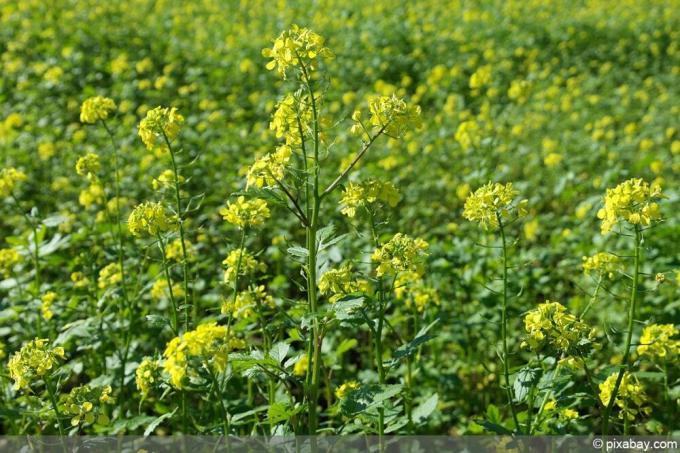
This wild mustard variety brings a slight spiciness. Well dosed, it enriches many dishes.
- approx. 60 cm tall, hairy stems, yellow flowers
- grows in gardens, on rubble heaps and on fields
- leaves and immature seed pods are harvested
- cooked and edible raw
- contains spicy mustard oil
- Harvest time is May to October
A notice:
Field mustard can easily be confused with rapeseed. However, since rapeseed is also edible, it is not dangerous to mix it up.
Bear Claw(acanthus)
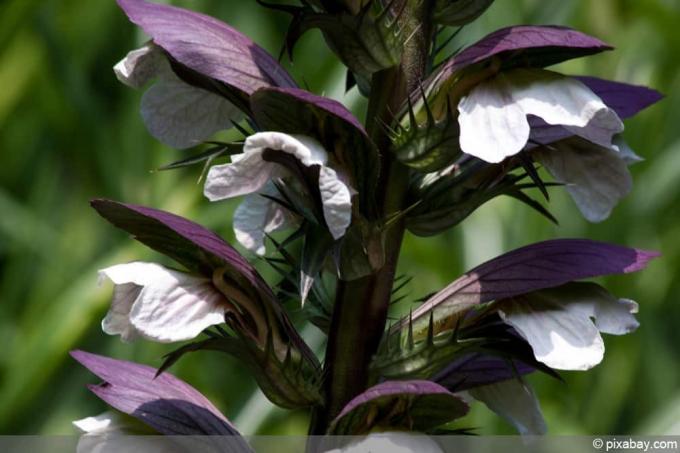
Although the hogweed gives off an unpleasant smell, all parts of the plant are tasty. Fortunately, this green delicacy is often found in nature.
- reaches heights of growth of up to 1.5 m
- the large and rough hairy leaves resemble animal feet
- white umbel flowers
- Find spots: Meadows, roadsides, sparse forests and gardens
- Collection time begins in spring
- the roots can be harvested from autumn
- not all species are suitable for consumption
- Meadow Bear Claw is edible
- Attention danger of confusion: Giant Bear's Claw/Hercules Staude (Heracleum) is poisonous and not edible!
A notice:
In combination with the sun, the plant sap can lead to contact allergies.
wild garlic(Allium ursinum)
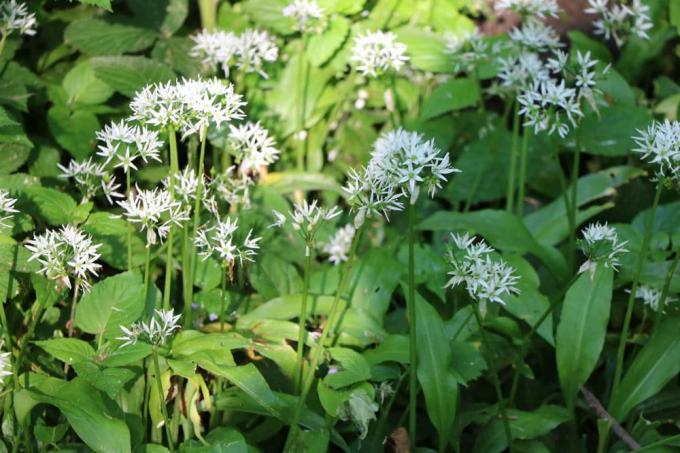
It exudes a garlic-like scent and is therefore often referred to as wild garlic.
- Growth height up to 50 cm
- Bulbous plant with mostly two stalked leaves
- Umbel with numerous white flowers
- grows in shady and damp forests
- all parts of the plant are edible
- Leaves are harvested in March and April
- Edible raw, flower buds can be preserved
- tastes good in sauces, soups and as pesto
- Fox tapeworm risk in outdoor harvest
- Wash out collected wild garlic under hot water
A notice:
Wild garlic can easily be confused with lily of the valley and autumn crocus. Be careful, because these two plants are poisonous.
mugwort (Artemisia vulgaris)

This weed is quite inconspicuous in appearance. Its aroma is all the more convincing. It has long been known in this country as a medicinal herb and spice.
- Leaves are pinnate and lanceolate in shape
- grey-green flowers are arranged in a raceme
- grows along the way, under bushes and on river banks
- eaten fresh or dried
- green parts can be collected from July to August
- the edible roots are dug up from September
A notice:
Mugwort leaves can be preserved by drying.
barberry(berberis)

In the Middle East, the berries of the barberry are an integral part of local cuisine. But this plant also thrives here. It is often known under the name sour thorn.
- the mini berries are dark red and elongated
- Berries are suitable for jam and syrup
- often grows in gardens and parks
- the shrub is also found in the mountains
- in autumn the fruits are ready to be picked
- Berries can be dried
A notice:
Only the fruits are edible. The rest of the plant is poisonous.
plantain(Plantago major)
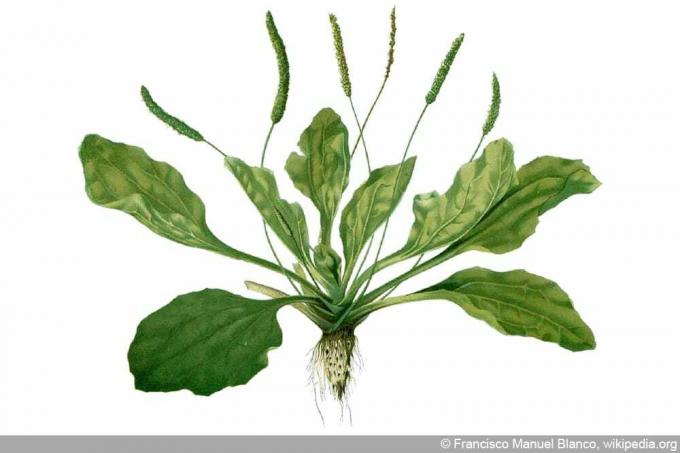
Like its relative, buckhorn, broadleaf plantain is an edible weed. Its leaves are a good substitute for spinach.
- broad and oval leaves, smooth edges
- yellow-brown, spike-like flowers
- Leaves are prepared like spinach
- Can also be eaten raw in salads
- young stalks are cooked like asparagus
- dry seeds as a muesli ingredient
- dry leaves are prepared as a tea
- the root can be harvested from October to April
nettle(Urtica)
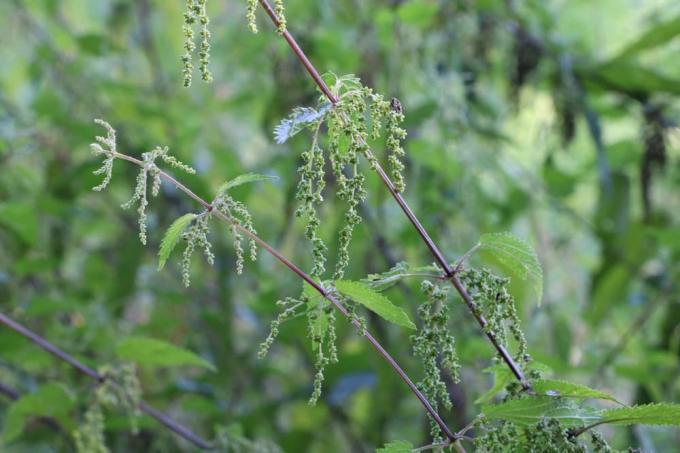
Even a light touch with the leaves of the stinging nettle is enough to trigger an unpleasant itch. For this reason, nettle is avoided by many. That's a shame, because this edible wild herb also has some valuable ingredients to offer.
- Useful and medicinal plant
- can grow more than 1 m high
- leaves are green, jagged and hairy on the underside
- inconspicuous flowers
- Harvest starts in spring
- Plant is edible raw and processed
- Leaves are spinach-like
- Tea infusion has a blood-purifying effect
A notice:
Direct raw consumption is not recommended. The nettle poison is only released when the leaves are rolled over with a rolling pin. After that, the leaves can be eaten raw.
daisy(Bellis perennis)
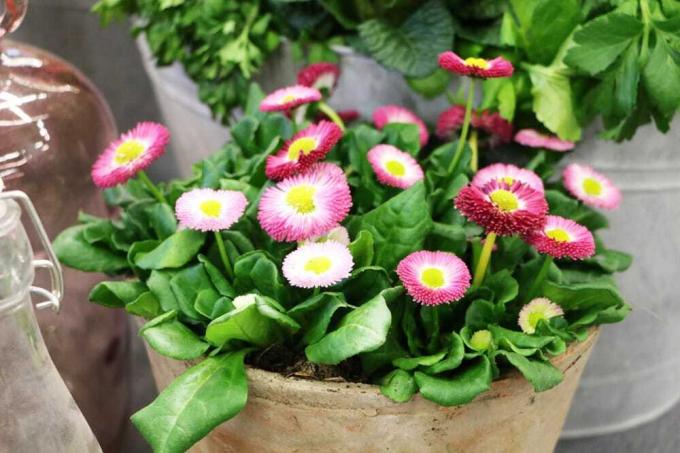
This mini flower is also known to real city children. Although it does not convince with an intense aroma, the edible flowers are an ornament for every salad.
- will be approx. 20cm high
- leafless stems with flowers
- small, white petals are arranged around a yellow center
- Leaves form a dense rosette of leaves
- prefer to grow on lawns
- Leaves, buds and flowers can be eaten
- can be eaten raw
- the seed is also edible
- Harvest time is from January to November
goutweed(Aegopodium podagraria)
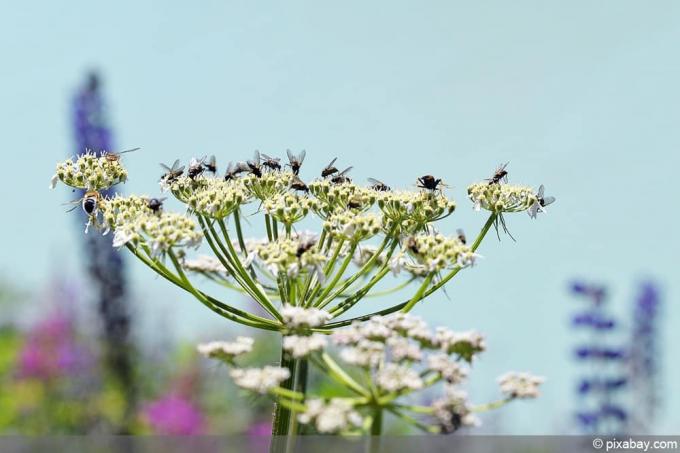
Giersch spreads stubbornly and is fought by many garden owners. But its good qualities are now increasingly being rediscovered.
- tripartite leaves
- when rubbed, they give off a smell of parsley
- grows in bushes and gardens
- Harvest time starts in April
- when the leaves are still tender
- cooked, they resemble chard
A notice:
There is a risk of confusion with the water hemlock, the spotted hemlock and the dog's parsley, all of which are highly poisonous.
Groundman(Glechoma hederacea)
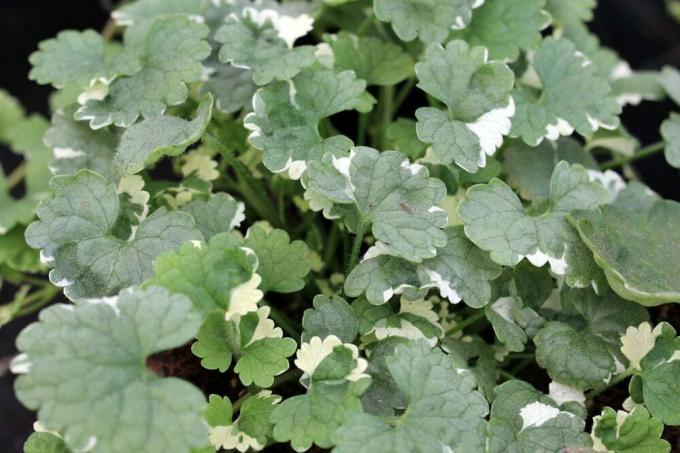
If you want to add a pleasant flavor to your dishes, the wild herb ground ivy is the right choice. With its tart taste, the herb provides a particularly large number of bitter substances that support our body's health.
- long, square stems
- heart shaped leaves
- blue-purple flowers
- grows in gardens, on meadows and pastures and in moist deciduous forests
- Leaves are edible like vegetables
- Flowers taste sweet
- Harvest time is March to November
Wild herbs from K to W
garlic mustard (Alliaria petiolata)
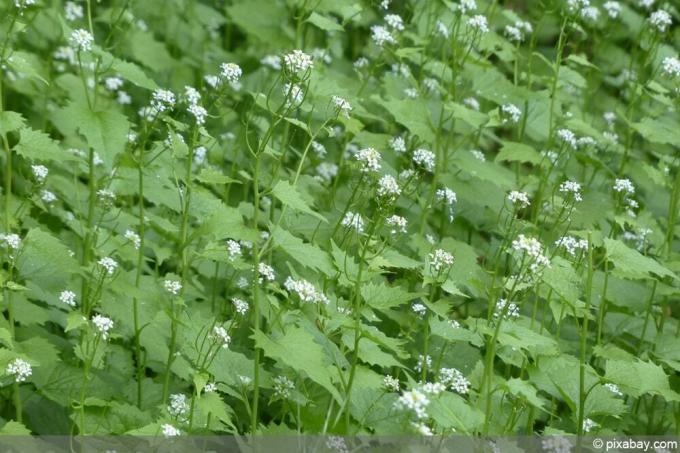
Garlic mustard is one of the first herbs of the year and is also one of the tastiest. It smells and tastes like garlic. Nevertheless, there is no unpleasant odor on the breath after eating garlic mustard.
- grows 50 to 100 cm high
- white flowers, 5-6 cm in size
- grows in partial shade
- at the edges of forests and under bushes
- all parts of the plant are edible
- the leaves are picked from April to June
- Inflorescences and seed pods can be used from May
- roots can be harvested in spring and autumn
dandelion(taraxacum)
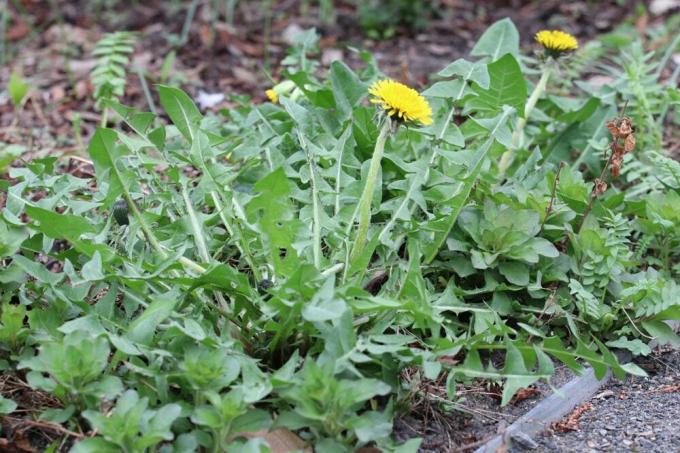
Amidst the green nature, the bright yellow flowers of the dandelion are hard to miss. And so everyone knows this wonderful wild herb. Its dandelions bring a lot of joy to children, but it also tastes delicious.
- grows up to 30 cm high
- green serrated leaves, yellow flowers
- also called dandelion or buttercup
- grows everywhere along roadsides, in meadows and in gardens
- Leaves, flowers and roots are edible
- raw in a salad or steamed
- April to July is the most tender
A notice:
Be careful when picking, the milky sap leaves stubborn stains
evening primrose(Oenothera)

The evening primrose is versatile in the kitchen and extremely tasty.
- can grow up to 2 m high
- numerous yellow flowers that open in the dark
- is easily recognizable when in bloom
- All parts of the plant are edible
- Flowers and buds raw in salads
- Leaves are eaten like spinach
- Seeds and roots can also be prepared in a variety of ways
sorrel (Rumex acetosa)
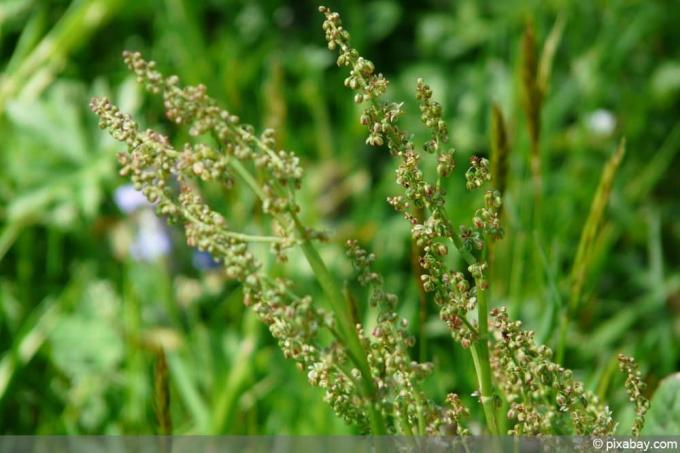
You can buy it at health food stores, grow it yourself, or just collect it in the wild.
- reaches 1 m in height
- has smooth, dark green to red-green leaves
- Panicle with red-brown, inconspicuous flowers
- adds flavor to dishes
- is also appreciated by gourmet chefs
- young, green leaves taste good raw or cooked
- suitable for vegan spreads
- Flower buds and seeds are also edible
- Collection places: Meadows, embankments, roadsides and gardens
A notice:
People with kidney problems and rheumatism should not eat sorrel. Because of the oxalic acid, it should also not be consumed regularly.
yarrow (Achillea)

You don't have to go far to collect this wild herb. It is a citizen of the world and really can be found everywhere. It is edible and also has healing properties in many cases.
- also known as a thousand leaf
- Growth height between 20 and 100 cm
- pinnate leaves
- cymes with numerous white flowers
- grows everywhere, especially along roadsides
- young leaves enrich salads
- Harvest months are March and April
- Flowers are edible and decorative
- they can be picked from May
- Dried plant parts can be used as medicinal tea
Chickweed (Stellaria media)
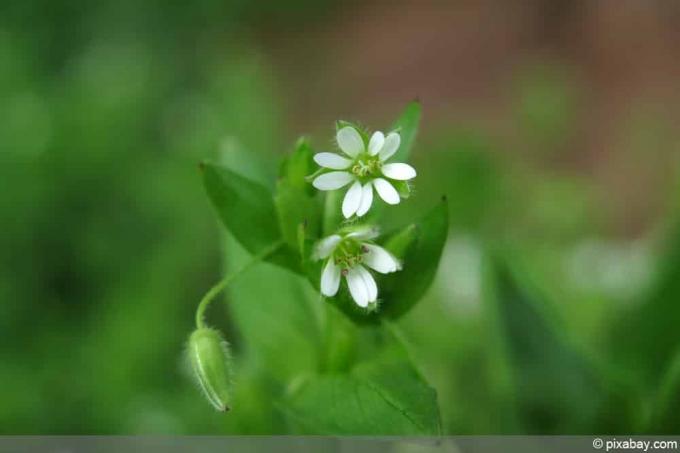
This "weed" not only tastes good as a salad base. It also has far more valuable nutrients than lettuce, for example. Thanks to the mild taste, it is also popular with children.
- 10 to 40 cm high
- small white flowers
- can be harvested all year round
- Leaves, buds, flowers and seeds are edible
- Collection places: Fields, roadsides and gardens
- suitable for green smoothies
A notice:
There is a risk of confusion with the weakly poisonous field pneumonia.
woodruff(Galium odoratum)

In our forests, weeds await with their ever-popular aroma.
- Height: 5 to 50 cm
- small white flowers
- long, narrow leaves are divided into so-called whorls arranged
- Leaves, shoots and flowers can be used
- Collection place: shady forests
- Harvest months are March to July
A notice:
The picked weed should dry first, because only then does the unmistakable woodruff aroma develop.
White Goosefoot(Chenopodium album)
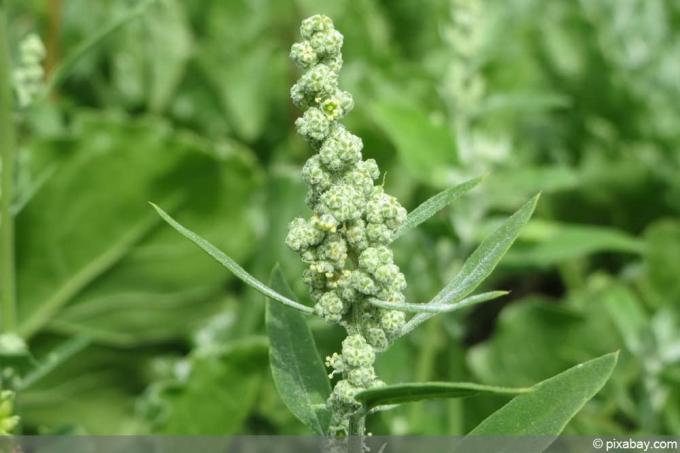
Its mineral and vitamin content surpasses that of many cultivated vegetables. It is often also referred to as a report or field report.
- depending on site conditions, it grows 5 cm 3 m high
- green-white, inconspicuous flowers
- Leaves are reminiscent of goose feet
- Plant looks floury
- can be found in fields and along roadsides
- often in gardens
- from April young shoots enrich salads
- also as an ingredient in green smoothies
- Inflorescences and buds are good substitutes for broccoli
- sprouts can be grown from seeds
A notice:
Soak seeds overnight to allow saponins to be rinsed off and removed afterwards.
meadowfoam(Cardamine pratensis)
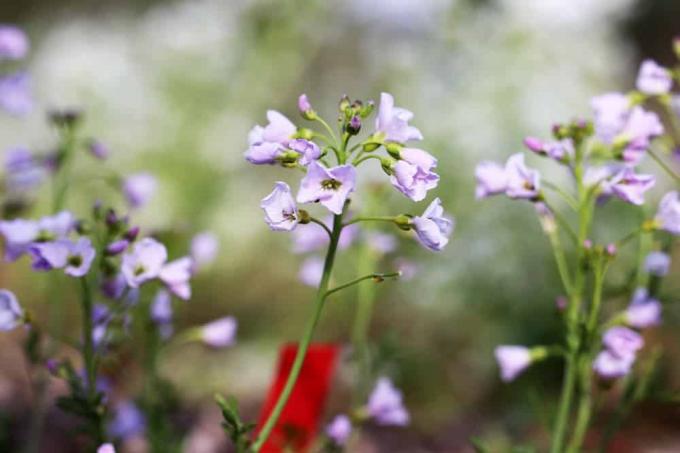
Meadow smock is refreshing and filling at the same time.
- also known as meadow cress
- grows about 15 to 40 cm high
- Leaves form a rosette
- Raceme with small, white to lilac colored flowers
- the tender leaves, blossoms and shoots have a mustard-like taste
- suitable for salads and soups
- dried flowers as tea
- collect from April to May
- on wet meadows and riparian forests
A notice:
Meadow smock should only be consumed in small amounts, otherwise it can irritate the stomach lining.
wild carrot(Daucus carota subsp. carota)
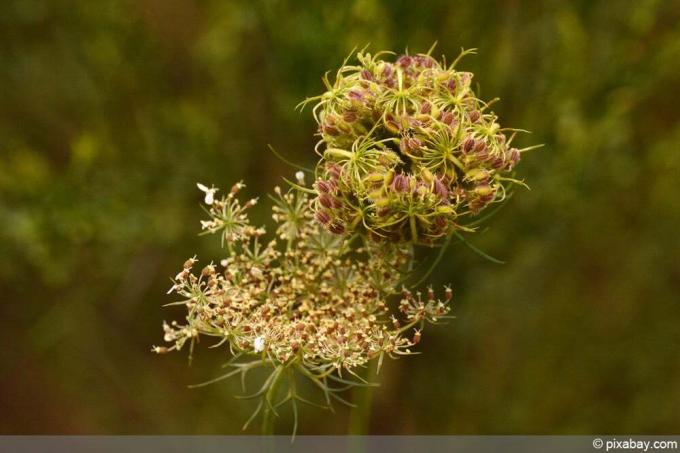
The original type of carrot cultivated today still grows in the wild, but it is hardly on our menu anymore. This is less because of their taste, much more deters the complex excavation.
- 40 to 80 cm high
- Leaves and flowers exude the typical smell of carrots
- white umbel flowers are black in the middle
- Field and meadow edges are preferred locations
- Root harvest takes place in late summer
A notice:
There is a risk of confusion with other umbellifers that are poisonous, such as hemlock. The carrot-like smell is an important distinguishing feature.
 garden editorial
garden editorial I write about everything that interests me in my garden.
Learn more about medicinal herbs

Celery, Apium graveolens: 14 tips for growing
Celery is often used as a soup vegetable along with other vegetables and herbs. There are several variants of celery, the cultivation of which hardly differs from each other. You can read here what you need to bear in mind.
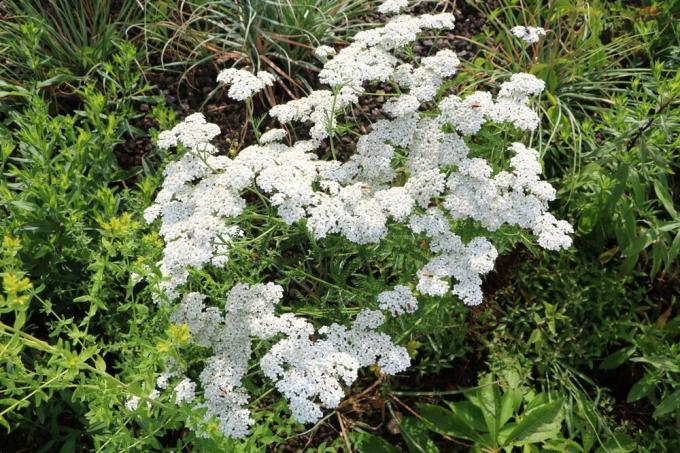
What is the effect of yarrow? | 9 areas of application
Yarrow is considered by many to be a weed in the garden, but in herbal medicine positive effects on health are attributed to the plant. But what effect should yarrow have and how can the plant be used?

Gotu Kola, Centella asiatica: Care from A – Z
The plant Centella asiatica, also known as Indian pennyroyal or tiger grass, is considered a so-called superfood and is currently very trendy. In Asia it is used under the name Gotu Kola as a medicinal plant that is said to accelerate wound healing and have an antidepressant effect. The tiger grass requires relatively little care and can basically also be grown successfully in this country.

Make comfrey ointment yourself | Instructions for making leaves
Comfrey is a valuable herb whose healing properties were praised by Paracelsus and Hildegard von Bingen. It can be used to make oils, tinctures and ointments. Both the roots and the leaves are suitable for making an ointment.

Process Comfrey | Dry and apply comfrey root
Comfrey, also known as comfrey or comfrey, is a very old medicinal plant that grows in the garden and outdoors in this country. However, the use of comfrey should always be done with care, because the plant also contains harmful substances.

Brahmi plant, Bacopa monnieri, bacopa - care from A-Z
Known from Indian medicine (Ayurveda), the bacopa is still an insider tip among indoor plants. Known as an aquarium plant for a long time, Brahmi can be found more and more often on the windowsill of Germans and is considered a particularly easy-care plant due to its undemanding nature.



